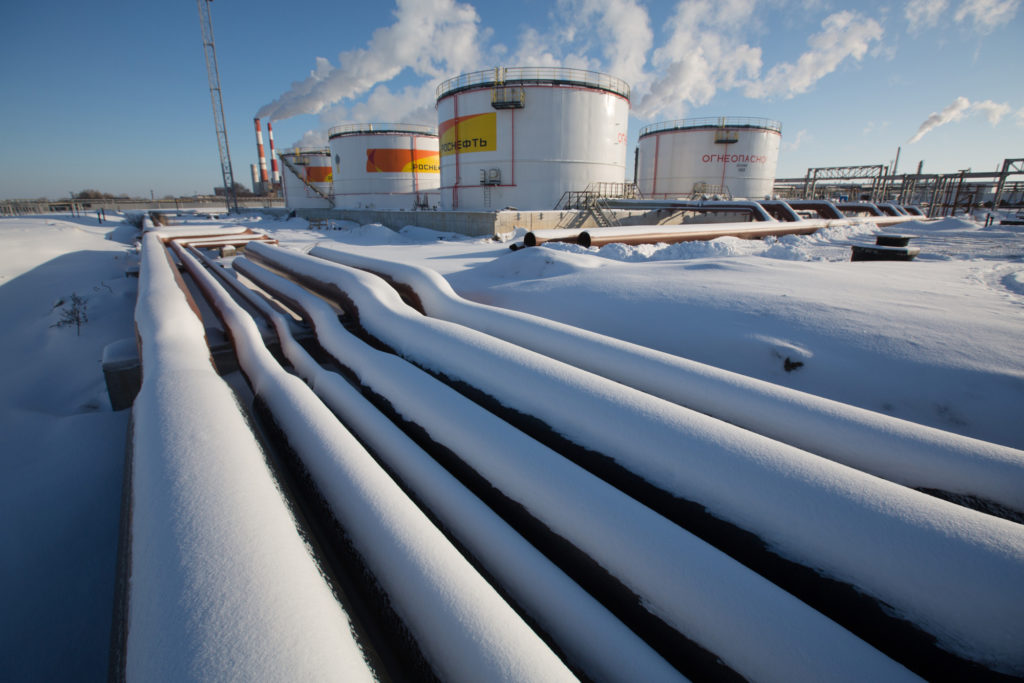
Oil held its biggest gain in two years, after being swept up in a rebound across risk assets spurred by optimism about the global economy.
Futures in New York were little changed after surging 8.7 percent in the previous session. The S&P 500 Index equity gauge rebounded on Wednesday from the brink of a bear market on signs of robust consumer spending, easing concern about the tenure of the Federal Reserve chief and progress on U.S.-China trade talks. Meanwhile, expectations for declining American crude inventories also supported prices.
Still, the rally represents only limited relief for oil, which is down almost 40 percent from a four-year high in October. Investors remain wary about the prospect of a supply glut, stoked by fears that output cuts pledged by OPEC and its allies won’t be enough to counter booming American shale output. There are also lingering concerns that a trade war between the U.S. and China — the world’s two biggest economies — could curb energy demand.
Also read: U.S. Shale’s Blows Leave Mideast Light Oil Producers Staggering
“Hopes of U.S.-China trade progress impacted equity and crude markets” even though it’s a small step in the negotiation process, Takayuki Nogami, chief economist at Japan Oil, Gas and Metals National Corp., said by phone in Tokyo. “As trading volumes are thin, crude prices could continue to be volatile and react to every little thing through early January.”
West Texas Intermediate for February delivery traded 17 cents lower to $46.05 a barrel on the New York Mercantile Exchange at 1:18 p.m. in Tokyo. The contract advanced $3.69 to $46.22 on Wednesday. Total volume traded was about 35 percent above the 100-day average.
Brent for February settlement dropped 21 cents to $54.26 a barrel on London’s ICE Futures Europe exchange. The contract rose $4 to $54.47 on Wednesday. The global benchmark crude traded at an $8.21 premium to WTI.
Oil jumped as all three major U.S. stock indexes gained at least 4 percent on Wednesday, a feat last achieved in 2011. President Donald Trump a day earlier had said an equity rout that pulled the S&P 500 Index down 19.8 percent from a record offered a “tremendous opportunity to buy.” Additionally, a White House official assured investors that Fed Chairman Jerome Powell won’t get fired, an action Bloomberg News reported over the weekend that Trump had discussed.
Signs that U.S. and China may be making progress to resolve their trade conflict also supported the rally in risk assets. A delegation led by Deputy U.S. Trade Representative Jeffrey Gerrish is said to plan traveling to China in the week of Jan. 7 for the first face-to-face discussion since the two countries agreed to a truce. That follows China’s announcement earlier this week on another round of tariff cuts.
Meanwhile, U.S. crude inventories probably fell 3 million barrels last week, according to a Bloomberg survey of analysts. If Energy Information Administration data due Friday confirms that, it will be a fourth consecutive weekly decline in U.S. stockpiles.
Other oil-market news: Kazakhstan will fully comply with its obligation to cut oil production by 40,000 barrels a day in the first half of 2019, in line with the OPEC+ agreement reached in Vienna early Dec., Energy Minister Kanat Bozumbayev said. Vagit Alekperov, president for Lukoil PJSC, forecasts crude will be stable at $60 or slightly more next year thanks to the OPEC+ pact.
Recommended for you
